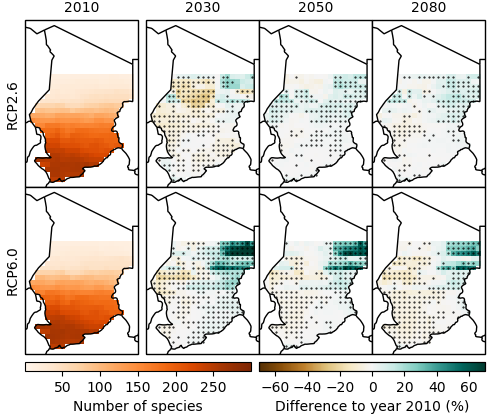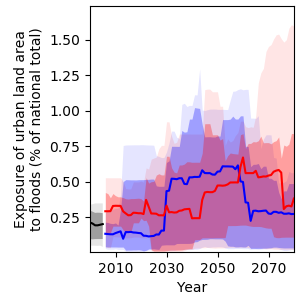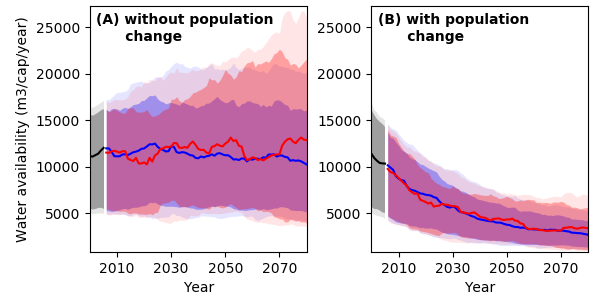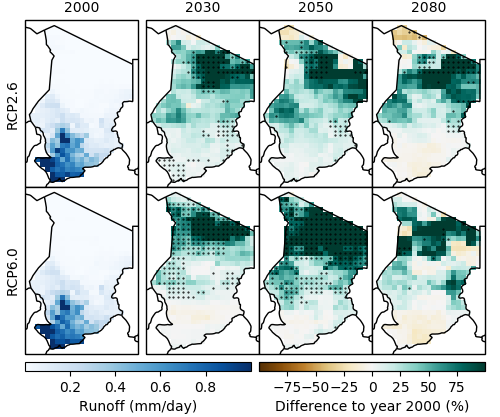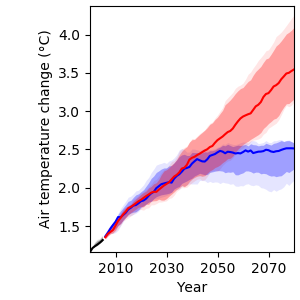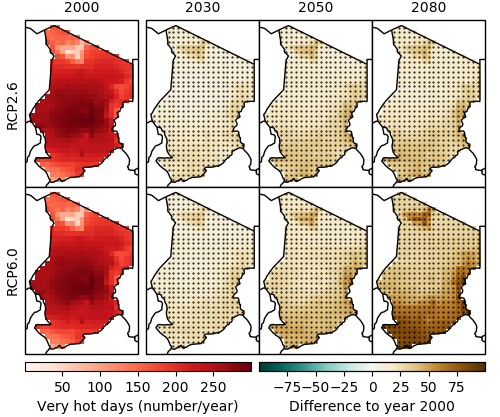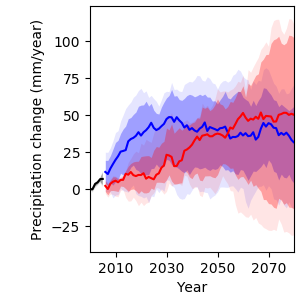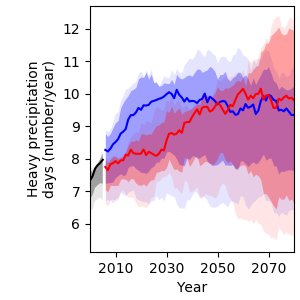Climate change threatens the health and sanitation sector through more frequent incidences of heatwaves, floods, droughts and storms. Among the key health challenges in Chad are morbidity and mortality through vector-borne diseases such as malaria, waterborne diseases related to extreme weather events (e.g. flooding) such as diarrhoea and cholera, respiratory diseases, measles and meningitis [38], [39]. Climate change can impact food and water supply, which can increase the risk of malnutrition and hunger. Many of these challenges are expected to become more severe under climate change. According to the World Health Organization (WHO), more than 2.5 million cases of malaria including 8 693 deaths were reported in 2018 [38]. Climate change is likely to have an impact on malaria transmission periods and the geographic range of vector-borne diseases: In Chad, like in other Sahel countries, the general malaria risk could decrease due to rising temperatures, but some regions are likely to become more vulnerable, for instance, due to more frequent incidences of flooding [39], [40]. Temperature increases and humidity decreases due to climate change have the potential to significantly increase the number of meningitis cases and prepone the seasonal onset of meningitis [41], [42]. Southern Chad is part of the so-called Meningitis Belt, which largely coincides with the Sahel region and which is where the majority of meningitis epidemics occur. Food insecurity and malnutrition present another major health problem: Between June and August 2020, 1.1 million people are expected to be severely food insecure with more than 460 000 cases of severe acute malnutrition [43].
Exposure to heatwaves

Rising temperatures will result in more frequent heatwaves in Chad, leading to increased heat-related mortality. Under RCP6.0, the population affected by at least one heatwave per year is projected to increase from 2.5 % in 2000 to 14 % in 2080 (Figure 17).
Heat-related mortality

Furthermore, under RCP6.0, heat-related mortality will likely increase from approximately 4 to about 12 deaths per 100 000 people per year (Figure 18). This translates to an increase by a factor of more than three towards the end of the century compared to year 2000 levels, provided that no adaptation to hotter conditions will take place. Under RCP2.6, heat-related mortality is projected to increase to about 8 deaths per 100 000 people per year in 2080.
References
[38] WHO, “World Malaria Report 2019,” Rome, Italy, 2019.
[39] R. Boyce et al., “Severe Flooding and Malaria Transmission in the Western Ugandan Highlands: Implications for Disease Control in an Era of Global Climate Change,” J. Infect. Dis., vol. 214, pp. 1403–1410, 2016.
[40] C. Caminade, A. E. Jones, R. Ross, and G. Macdonald, “Malaria in a Warmer West Africa,” Nat. Clim. Chang., vol. 6, no. November, pp. 984–985, 2016.
[41] A. F. Abdussalam et al., “The Impact of Climate Change on Meningitis in Northwest Nigeria: An Assessment Using CMIP5 Climate Model Simulations,” Weather. Clim. Soc., vol. 6, no. 3, pp. 371–379, 2014.
[42] A. M. Molesworth, L. E. Cuevas, S. J. Connor, A. P. Morse, and M. C. Thomson, “Environmental Risk and Meningitis Epidemics in Africa,” Emerg. Infect. Dis., vol. 9, no. 10, pp. 1287–1293, 2003.
[43] OCHA, “Chad: Humanitarian Situation Overview (February 2020),” N’Djamena, Chad, 2020.



